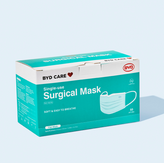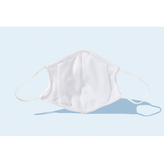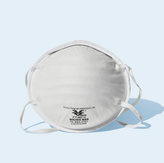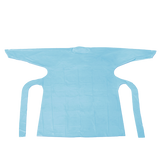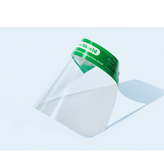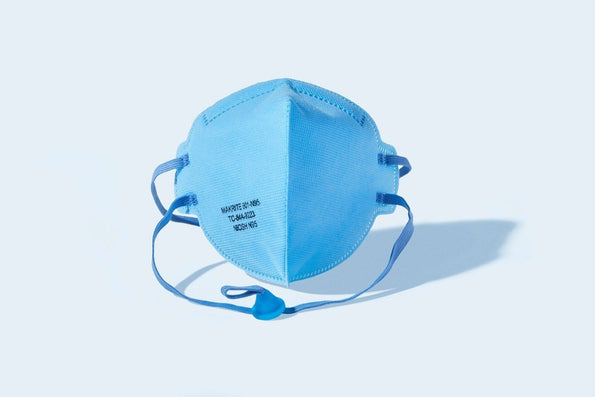What is double-masking?
As a result of the rise of new coronavirus variants, Dr. Fauci and other health experts are urging that people double down on their efforts to stay safe. One of the methods being discussed is double-masking –– wearing a disposable 3ply mask and a cloth mask.
Double masking attempts to up filtration by pairing 3ply and cloth masks. Still, these masks don’t fit as tightly as is needed in order to stay protected in crowded areas. While it might be functional in the short-term, it’s ultimately awkward, uncomfortable, hard to breathe, and therefore unnecessary.
N95s are designed specifically to solve this problem –– they fit securely, filter, and are breathable all at the same time. They are no longer in short supply either.
Several medical experts have weighed in, including Dr. Sanjay Gupta, saying that at this point everyone should be wearing N95s. Germany is already requiring all residents to use an N95 or its equivalent when in public. The WHO recommends that those over 60, suffering from preexisting conditions, or who are feeling unwell wear these medical masks. If you are entering a crowded space (such as a grocery store or a plane), you should especially consider wearing an N95 now that supply chain challenges have been resolved.
Breathability and comfortability are key
Protection vs. breathability is the central design tradeoff that mask manufacturers have spent decades optimizing. N95s use meltblown fabric –– a mesh layer of tiny plastic filaments that typically trap 95% or more particles while letting plenty of air through.
In light of the pandemic, manufacturers have innovated even further, crafting N95s that are more comfortable for all-day use. With adjustable straps, foam nose pieces, and more, some are even better than they were pre-pandemic. Models like the Makrite 801 and the Innonix Respokare look sleeker in addition to providing premium protection. The Makrite 801 is a favorite among clinicians and consumers alike due to its breathability.
Finding the right fit
A mask must seal against the face on all sides to work. Otherwise, unfiltered air can seep in the gaps. This is like closing a door but opening a window. That’s why 3ply and cloth masks are considered to be effective in protecting others, but significantly less effective in protecting the person wearing them.
Respirators are designed to stay in place and fit securely without adjustments, so you don’t have to fiddle to keep it from slipping like with cloth or 3ply. By touching your mask less, you are lowering your risk of infection.
There are simple and intuitive ways for you to figure out if your mask fits correctly at home. Working professionals use these requirements to test the fit of N95s. For example, while being fit tested for leaks or gaps, often people are asked to read what’s called the “Rainbow Passage” to check the breathability of the mask. Here’s a quick fit check you can do to make sure that no air is escaping.
It’s important to see if the N95 model you’re ordering is for small, medium, or large face shapes. We created a guide to help you find the right mask in addition to an N95 Fit Kit, so that you can test out a variety of N95s at-home to find the best one.
Isn’t there a shortage of N95s? No, not anymore
At the start of the pandemic, public health officials intentionally urged consumers not to wear N95s. This was not based on any science that N95s, cloth, and 3ply masks are equally protective, but rather supply chain scarcity and desire to reserve N95s for frontline workers.
There was a dramatic shortage in the first half of 2020 when, overnight, all health care workers needed to wear N95s, all-day, every day. Health care workers use different N95s than those typically available for retail, but when surgical N95s (surgical N95s are splash resistant preferred by many professional procurement teams) were unavailable, doctors relied on standard N95s as backups. Nearly one year later, supply chains have caught up with demand. There’s even an oversupply of N95s at the wholesale level.
Today when clinicians encounter trouble getting what they need, it is often due to procurement policies, budgeting, usage restrictions, and more –– not because there’s a shortage of goods available for purchase. You can read more about why shortages are no longer a concern in our previous blog post.
What about “price gouging?”
N95s used to cost as little as $0.50, but they cost substantially more to produce today. Raw material costs are up, manufacturers have invested in new facilities and pay workers overtime to supply what the world needs. Then there are shipping costs and customs duties (for overseas production), as well as all the e-commerce infrastructure to get it to your doorstep. Retailers typically only make 25-30% on the N95s they’re selling. So, N95s are actually a low margin product for maximum protection.
Compare this with cloth mask profit margins. Cloth masks cost about $1 wholesale and are sold for anywhere between $3 and $20 because they are considered fashion items, meaning margins are anywhere between 60%-2000%. Yes, they are reusable and look better, but they are also less effective. In other words, cloth masks are a maximum margin product for low protection.
If you look at this from the perspective of investing in the best protection (when you can’t socially distance), N95s might actually be quite a deal.




